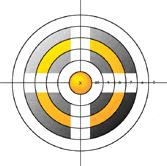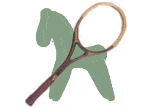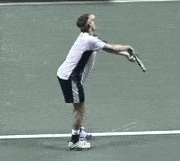
Do you write down your goals daily? I’ve talked to you about this before. Were you paying attention? The more you write down your goals, the more space they take up in your thinking. You start making plans with your goals in mind and think more about what you need to make them come true. Lanny Bassham suggests you have three types of goals: position – where you want to place, technique – a skill you want to improve, and self – something in your self-image you want to change. In my case they would look like this:
position: I am a level D player
technique: I maintain my service rythm throughout the match
self: I am a winner, I do whatever it takes to win
Well, I’ll do whatever it takes to win within reason. I’m not going to bite my opponent’s ear off any time soon.
Yes, Brad Gilbert is a genius. When he was on the pro tennis tour, he was called the giant-killer because of his uncanny ability to knock off the top rated players despite his fairly awkward looking shots and less than average second serve. He studiously analyzed his opponent’s game noting their strengths, weaknesses and patterns. Which stroke is their weakest? Where do they like to serve during a break point? Where do they like to hit their approach shot? What kind of mind games do they like to play if they are starting to lose control of the match? He used that information to maximize their weaknesses and minimize his. Most of the time he found a way to win and was extremely annoying to play against even if he didn’t.
I played the top player in my level today and came within a tiebreaker of beating him. I scouted his weaknesses and strengths and decided to hit everything to his backhand and lob him when he came to the net. Except for a bit of consistency in my serve, it would have been a win. This is noticeable improvement and is directly related to using Brad Gilbert’s techniques.
Practice and Competition:
played league today, one set of doubles and one set of singles: 5-7, 6-7(3-7)
Solutions Analysis:
looking for a solution to losing my service rhythm (Sean Brawley).
Success Analysys:
1. took the number one player in my level to a tie-breaker.
2. carried my planned strategy out throughout the match.
3. stayed calm and took my sweet time between points.
 Also consider
Also consider 